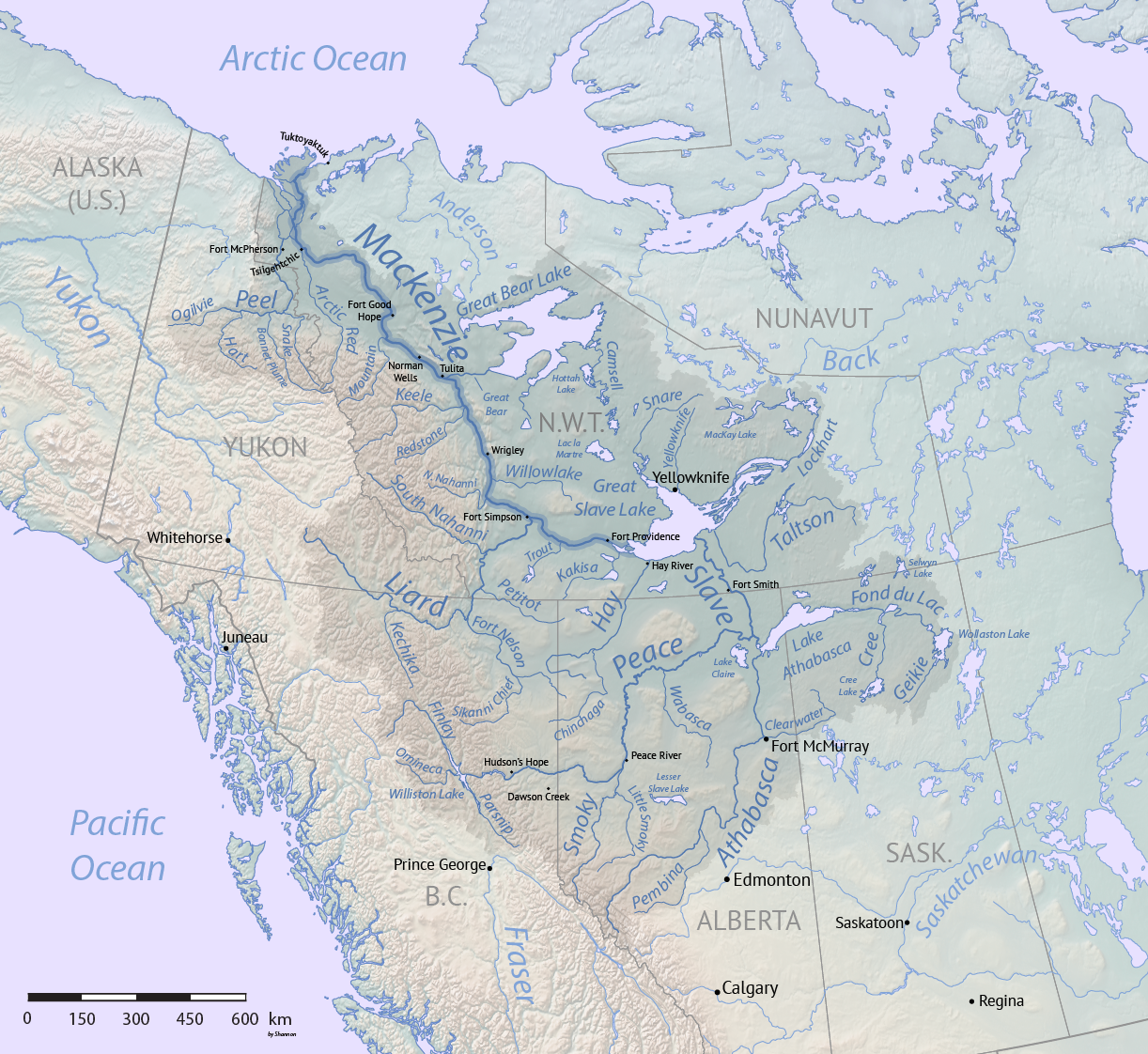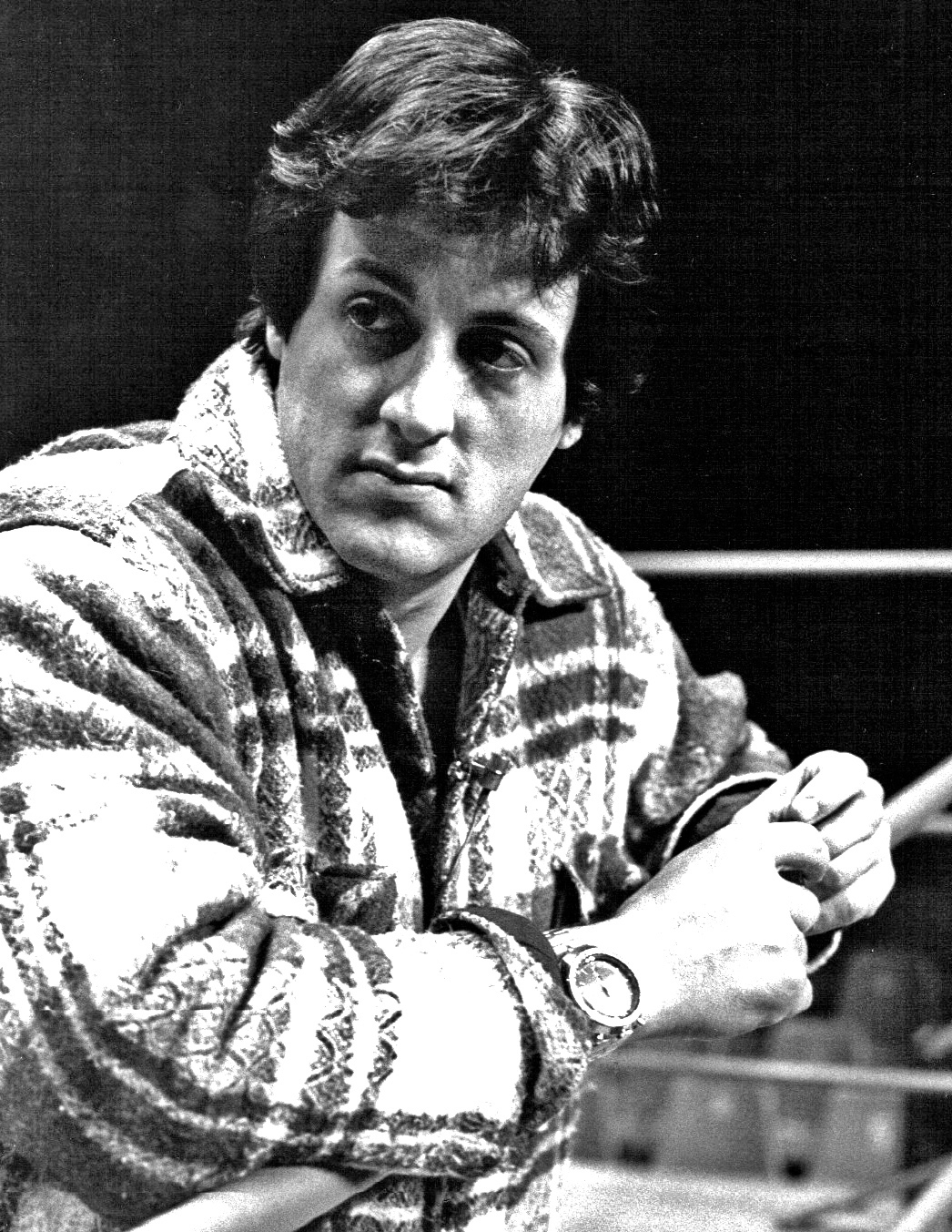|
Coppermine River
The Coppermine River is a river in the North Slave and Kitikmeot regions of the Northwest Territories and Nunavut in Canada. It is long. It rises in Lac de Gras, a small lake near Great Slave Lake, and flows generally north to Coronation Gulf, an arm of the Arctic Ocean. The river freezes in winter but may still flow under the ice. The community of Kugluktuk (formerly Coppermine) is located at the river's mouth. The river was named for the copper ores which are located along the river, by Samuel Hearne in 1771. Hearne found only one lump of copper and commercial mining was not considered viable. Bloody Falls, part of the Kugluk/Bloody Falls Territorial Park, is located from Kugluktuk, and was home to the Kogluktogmiut a sub-group of the Copper Inuit. It is the site of the Bloody Falls Massacre, when Matonabbee, Samuel Hearne's guide, and his fellow Chipewyan warriors ambushed and massacred the local Inuit. Gallery See also *List of longest rivers of Canada Among the lo ... [...More Info...] [...Related Items...] OR: [Wikipedia] [Google] [Baidu] |
George Back
Admiral Sir George Back (6 November 1796 – 23 June 1878) was a British Royal Navy officer, explorer of the Canadian Arctic, naturalist and artist. He was born in Stockport. Career As a boy, he went to sea as a volunteer in the frigate in 1808 and took part in the destruction of batteries on the Spanish coast. In the following year, he was involved in combat in the Bay of Biscay, until he was captured by the French. Back remained a prisoner at Verdun until the peace of early 1814; during this time he studied French and mathematics and practised his skills as an artist, which he later put to use in recording his travels through the Canadian Arctic. Following his release, Back served on and as a midshipman before volunteering to serve under John Franklin in his first expedition to the Arctic in 1818. Back also served under Franklin in his two overland expeditions to survey the northern coast of North America, first on the Coppermine expedition—when Back was respon ... [...More Info...] [...Related Items...] OR: [Wikipedia] [Google] [Baidu] |
Bloody Falls
Bloody Falls (or Bloody Fall, or Kogluktok, meaning "it flows rapidly" or "spurts like a cut artery" in Inuktitut) is a waterfall on the Coppermine River, in the Kugluk/Bloody Falls Territorial Park of Nunavut, Canada. It was the site of the Bloody Falls Massacre in 1771 and the murder of two priests by Copper Inuit Uloqsaq and Sinnisiak in 1913. The nearest hamlet, Kugluktuk, Nunavut, is away. Historically, this area was occupied by the Kogluktogmiut subgroup of Copper Inuit. In 1978, the portion of the Territorial Park northwest of the Coppermine River was designated the Bloody Falls National Historic Site of Canada, as the archaeological remains of pre-contact hunting and fishing sites in the area form a record of the presence of Pre-Dorset, Thule, First Nation and Inuit Inuit (; iu, ᐃᓄᐃᑦ 'the people', singular: Inuk, , dual: Inuuk, ) are a group of culturally similar indigenous peoples inhabiting the Arctic and subarctic regions of Greenland, Labrador, Q ... [...More Info...] [...Related Items...] OR: [Wikipedia] [Google] [Baidu] |
Rivers Of The Northwest Territories
A river is a natural flowing watercourse, usually freshwater, flowing towards an ocean, sea, lake or another river. In some cases, a river flows into the ground and becomes dry at the end of its course without reaching another body of water. Small rivers can be referred to using names such as creek, brook, rivulet, and rill. There are no official definitions for the generic term river as applied to geographic features, although in some countries or communities a stream is defined by its size. Many names for small rivers are specific to geographic location; examples are "run" in some parts of the United States, "burn" in Scotland and northeast England, and "beck" in northern England. Sometimes a river is defined as being larger than a creek, but not always: the language is vague. Rivers are part of the water cycle. Water generally collects in a river from precipitation through a drainage basin from surface runoff and other sources such as groundwater recharge, springs, a ... [...More Info...] [...Related Items...] OR: [Wikipedia] [Google] [Baidu] |
List Of Longest Rivers Of Canada
Among the longest rivers of Canada are 47 streams of at least . In the case of some rivers such as the Columbia, the length listed in the table below is solely that of the main stem. In the case of others such as the Mackenzie, it is the combined lengths of the main stem and one or more upstream tributaries, as noted. Excluded from the list are rivers such as the Dauphin, a short connecting link between lakes Manitoba and Winnipeg, with main stems of or less. Also excluded are rivers such as the Mississippi, the main stems of which do not enter Canada even though some of their tributaries do. Nine rivers in this list cross international boundaries or form them. Four—the Yukon, Columbia, Porcupine, and Kootenay—begin in Canada and flow into the United States. Five—the Milk, Pend d'Oreille, Saint Lawrence, Red, and Saint John—begin in the United States and flow into Canada. Of these, the Milk and the Kootenay cross the international border twice, the ... [...More Info...] [...Related Items...] OR: [Wikipedia] [Google] [Baidu] |
Rocky Defile, Coppermine River
''Rocky'' is a 1976 American sports drama film directed by John G. Avildsen and written by and starring Sylvester Stallone. It is the first installment in the ''Rocky'' franchise and stars Talia Shire, Burt Young, Carl Weathers, and Burgess Meredith. In the film, Rocky Balboa (Stallone), an uneducated, small-time club fighter and debt collector gets an unlikely shot at the world heavyweight championship held by Apollo Creed (Weathers). ''Rocky'' entered development in March 1975, after Stallone wrote the screenplay in three days. It entered a complicated production process after Stallone refused to allow the film to be made without him in the lead role; United Artists eventually agreed to cast Stallone after he rejected a six figure deal for the film rights. Principal photography began in January 1976, with filming primarily held in Philadelphia; several locations featured in the film, such as the Rocky Steps, are now considered cultural landmarks. With an estimated production ... [...More Info...] [...Related Items...] OR: [Wikipedia] [Google] [Baidu] |

.jpg)



